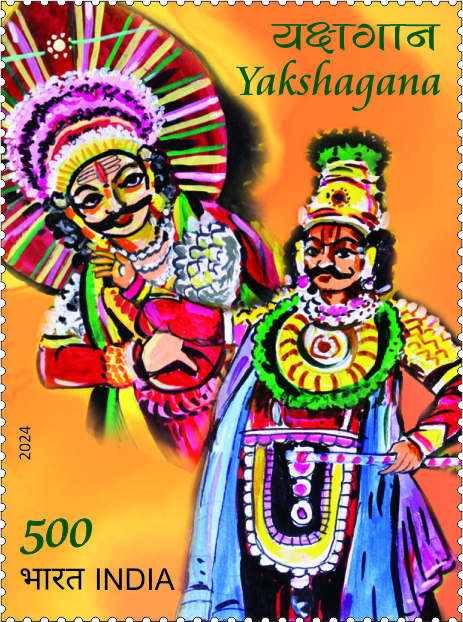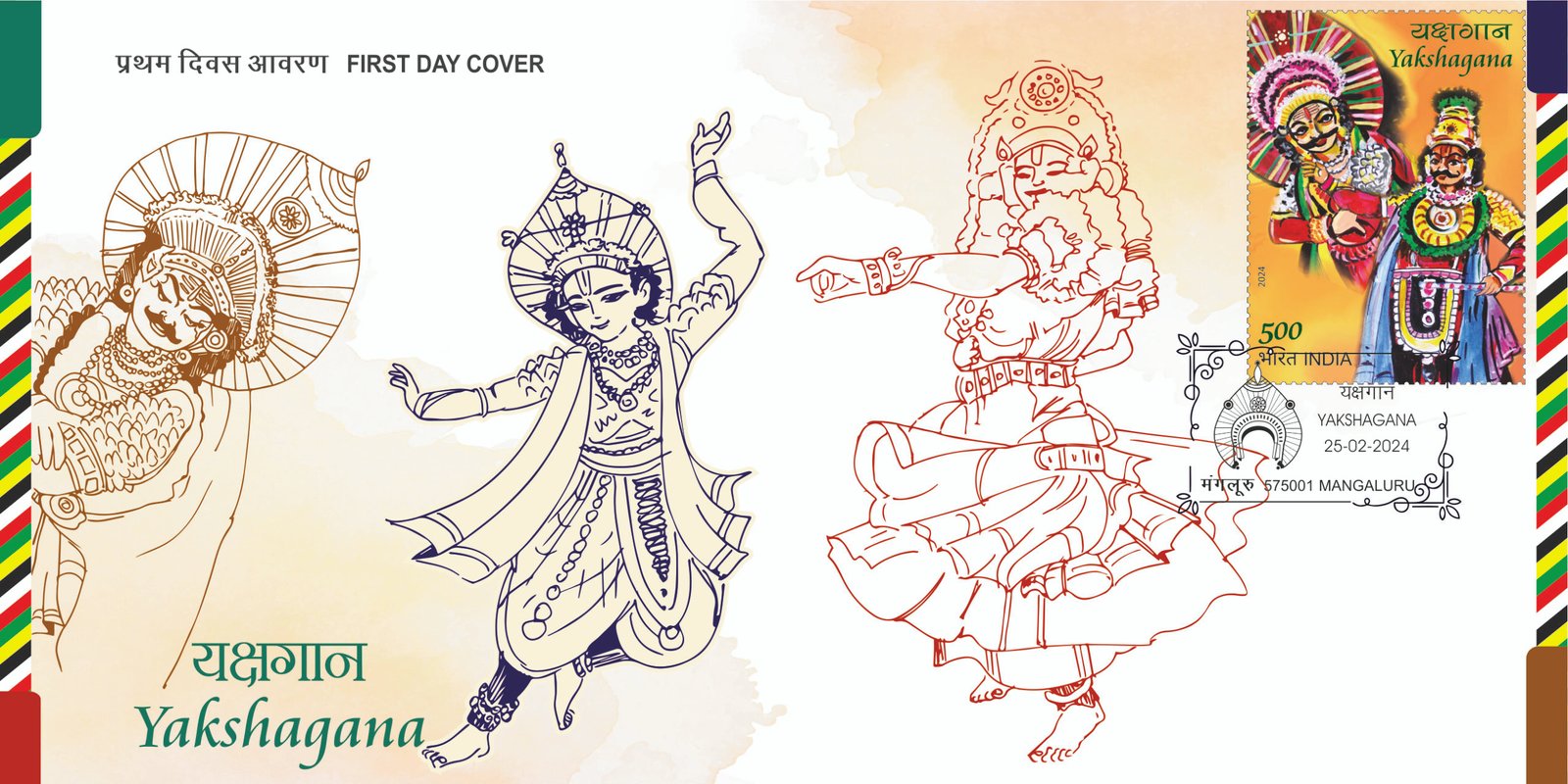Yakshagana Folk Dance

Technical Data
| Date of Issue | February 25, 2024 |
|---|---|
| Denomination | Rs. 5 |
| Quantity | 302,360 |
| Perforation | 14¼ x 14½ |
| Printer | Security Printing Press, Hyderabad |
| Printing Process | Wet Offset |
| Watermark | No Watermark |
| Colors | Multicolor |
| Credit (Designed By) | Ms. Nenu Gupta |
| Catalog Codes |
Colnect codes IN 2024.02.25-02 Yvert et Tellier IN 3632 Stanley Gibbons IN 3902 |
| Themes | Dance | Suits and Costumes |
The Traditional Theatre Art of Karnataka
Yakshagana is a distinctive and vibrant traditional performing art form of Karnataka, with a history spanning over six centuries. Evolving from its folk roots, it has grown into a highly sophisticated theatre that beautifully integrates the principles of Bharata’s Natya Shastra.
A Unique Blend of Dance, Drama, and Music
Yakshagana is a captivating fusion of dance, drama, music, and dialogue. It harmonizes the four forms of Abhinaya—Aharya (costume), Angika (gesture), Vachika (speech), and Sattvika (emotion). With its stylized performances, elaborate costumes, rhythmic music, and expressive storytelling, Yakshagana balances classical discipline with folk creativity. Traditionally, these all-night performances bring to life episodes from the Ramayana, Mahabharata, and the Puranas. Rooted in ritual, Yakshagana is both moralistic in purpose and entertaining in performance, appealing intellectually and emotionally to its audiences.
Regional Variants of Yakshagana
Over time, Yakshagana has developed several regional styles. Commonly known as Ata (play), Dashavatara Ata (depicting the ten avatars of Lord Vishnu), and Bayalata (open-air play), its forms vary across Karnataka:
- Thenku Thittu (Southern Style): Performed in Dakshina Kannada to Kasaragod.
- Badaga Thittu (Northern Style): Found from Udupi up to Uttara Kannada.
Each variant adds its own regional flavor, enriching the diversity of this art form.
Etymology and Evolution
The term Yakshagana combines Yaksha (demigod or worship) and Gana (song). Rooted in temple traditions, it evolved from devotional singing (Yakshagana Prabandham) in the 15th century into a full-fledged theatre. While no comprehensive texts describe its features like other classical arts, references such as Sabhalakshana provide insight into performance practices, roles, and invocatory songs.
From Folk Roots to Cultural Heritage
Yakshagana’s origins lie in rustic village traditions, where unlettered artists preserved and passed down the art form through oral training. In the last century, educated performers and researchers have enriched Yakshagana, blending folk vigor with classical discipline. Today, it thrives as a living theatre tradition, reflecting Karnataka’s cultural heritage.
A Philatelic Tribute
The Department of Posts is proud to release a commemorative postage stamp on Yakshagana, honoring its vital role in preserving India’s rich cultural heritage and performing arts tradition. This issue celebrates Yakshagana as a symbol of Karnataka’s artistic spirit and India’s diverse cultural legacy.
First Day Cover

